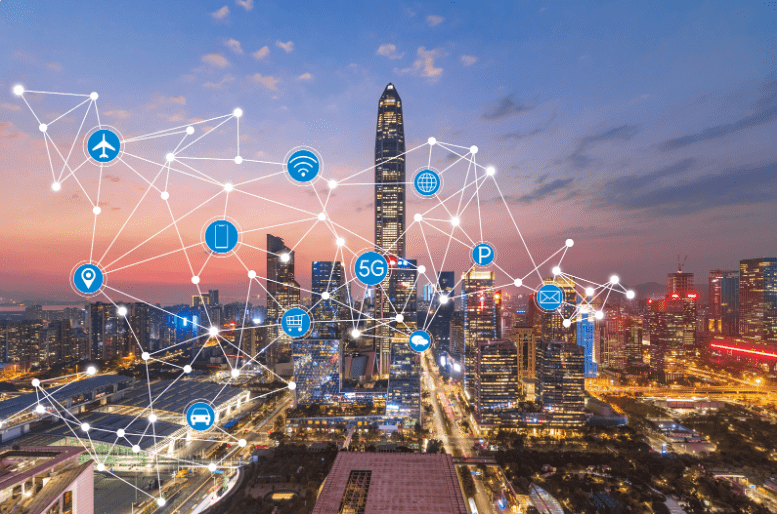Given the pace of change today, there is a pressing need to fast-track digital transformation journeys to drive innovation and create new value for all stakeholders.
The more complex the operating environment is, the more effort needs to be put in to transform it to their advantage. For organizations in the intelligent buildings, manufacturing, healthcare, or transportation sectors, transformation is particularly challenging because of the presence of controlled environments.
The complexity of real-time data analysis
Industrial and building automation companies that work with IoT applications and other intelligent technologies need to be able to carry out detailed micro-analysis of their environments across data centers, warehouses, retail outlets, and more. But despite the pressing need for real-time data analysis, they are not able to deliver the intended results because their existing macro-level environment monitoring devices are not adequate for environmentally controlled spaces.
Not only do these devices lack modern analytics capabilities, but they also do not use configurable gateways or cloud platforms that can help unearth deep insight into business operations. Lack of such insight means organizations end up having little or no understanding of different aspects of their controlled environments such as temperature, pressure, air quality, and humidity. This often leads to poor or inaccurate decisions being taken on the ambient environment, which can not only disrupt business operations but also put the workplace at risk of a disaster and the workforce at risk of injury.
For instance, in large environmentally-controlled data centers which house thousands of servers, real-time data analysis is extremely crucial. Operators need to have high level of expertise in fix (or prevent issues) to maintain uptime as per SLAs while also minimizing disruptions. But without the right tools in place, they do not have the capacity to address these issues. Lack of insights into operations and little or no way to correlate issues makes it impossible for them to understand the impact they can have on the overall performance and availability of services.
Similarly, in cold storage logistics, companies need to be able to deliver perishable food and medical products in the best condition possible. Yet, due to the constantly changing regulations and the volatile nature of the industry, in the absence of the right analytics, most companies end up wasting goods that amount to billions of dollars in losses. These issues arise mainly due to an inability to maintain temperature, faulty equipment, mishandling, inadequate packaging, and more. For blood banks, refrigerated warehouses, and cold storage rooms, these issues can result in far-reaching consequences. Monitoring cold storage logistics via real-time data analytics provides them with more granular insight into what’s exactly happens in their cold chain, that eventually leads to devising better strategies to run more effective cold chains.
The criticality of real-time analysis
Business decisions that are taken in controlled environments need to be extremely accurate and precise. Therefore, organizations must plan to invest in modern tools and technologies that allow them to maintain regulated environmental factors to meet operational needs.
Here’s why real-time data analysis is critical in controlled environments:
- Enables better visibility: Real-time data analysis via intelligent technologies delivers immense benefits to all stakeholders involved. By combining the latest advancements in cloud and connectivity, it enables better visibility across the controlled environment.
- Increases control: Another benefit of real-time analysis is better control for owners, occupants, and operators. Since analysis fosters adequate interoperability between different systems, key stakeholders can have seamless access to real-time actionable insights, thus achieving more control over day-to-day as well as long-term outcomes.
- Allows for enterprise-wide integration: Building and industrial automation companies that rely on real-time data analysis also benefit from better cohesion between different departments. Since data for analysis purposes is captured from various business units and locations, there is a huge opportunity to integrate various subsystems, which otherwise operate in silos as they are supplied and installed by disparate vendors.
- Enhances operational efficiency: Real-time data analysis also helps in improving operational efficiency. By constantly monitoring aspects of the controlled environment, these analytics solutions can detect issues and anomalies and spot red flags while alerting staff to take immediate remediation steps. Quick workarounds can make sure the environment is working as intended and deadlines are met as required.
- Improves energy efficiency: The use of IoT sensors for monitoring controlled environment parameters also presents organizations with useful and interesting insights that can be used to improve energy efficiency. By furnishing classification models that detect the number of occupants in a controlled environment, organizations can optimize energy usage while also driving efforts in safeguarding their health and comfort through timely management of ambient factors.
- Streamlines resource management: Analysis of controlled environments also presents organizations with several opportunities for improved resource management. Using modern data analytics tools, organizations can detect the presence and distribution of people in buildings and alert them, if needed, in case of emergency evacuations.
The real success of intelligent buildings stems from their ability to offer an advanced level of insight and control – which is only possible through real-time data analysis. The right data analytics systems can not only pave the way for more efficient operations, but they can also help in optimizing resource management, enabling better space utilization, as well as greater productivity. Using smart devices, analytics, sensors, and the cloud, can also help optimize energy requirements – a key priority for businesses to keep up with the green wave.
At Intellore, we believe in transforming the foundations of intelligent buildings. Therefore, we offer a range of data analytics services to deliver new levels of insight and control, so you can get the most out of your controlled environments.


